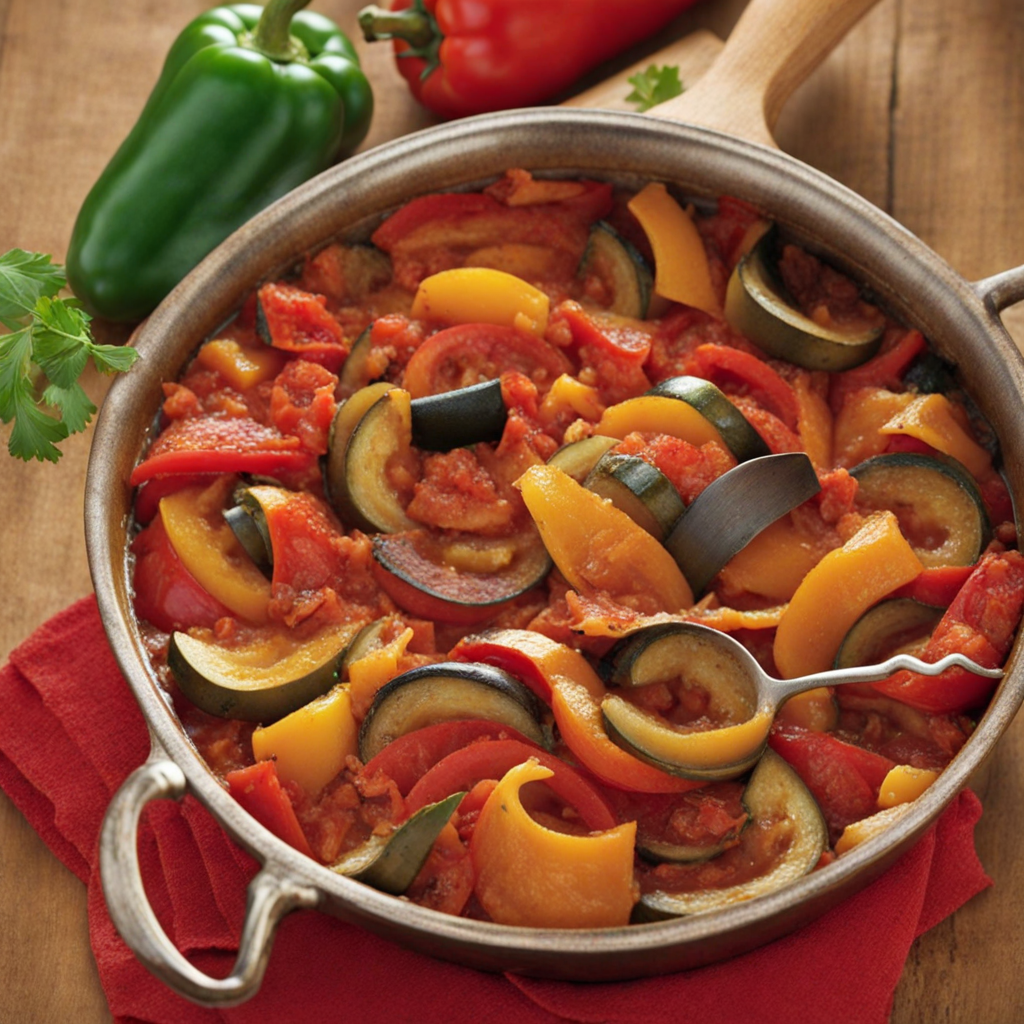Libatepertő
Libatepertő is a traditional Hungarian delicacy that tantalizes the taste buds with its rich flavors and unique texture. This dish is primarily made from the crispy cracklings of pork, known as 'pertő,' which are derived from the skin and fat of the pig. The cracklings are seasoned with a blend of spices, including paprika, salt, and sometimes a touch of garlic, creating a savory and aromatic profile that perfectly complements the crispy texture. The process of making Libatepertő involves slow-cooking the pork until the fat renders out and the skin crisps up, resulting in a delightful crunch that is both satisfying and indulgent. The flavor of Libatepertő is complex yet approachable, offering a perfect balance between the richness of the pork and the earthy notes of the spices used. It is often enjoyed as a snack or appetizer, served with fresh bread, pickles, or even a dollop of mustard to enhance the tasting experience. The dish is a staple at Hungarian festivities and gatherings, where it is celebrated for its ability to bring people together over a shared love for hearty, flavorful food. The contrast of the crispy cracklings with the soft bread creates a satisfying mouthfeel that is hard to resist. Libatepertő embodies the essence of Hungarian cuisine, showcasing the country's love for robust flavors and traditional cooking methods. It is not just a food item; it’s a cultural experience that reflects the agricultural heritage of Hungary, where pig farming has long been an integral part of rural life. For those looking to discover a new taste, Libatepertő offers a delicious journey into the heart of Hungarian culinary traditions, inviting you to savor each crunchy bite while appreciating the history and craftsmanship behind this beloved dish.
How It Became This Dish
Libatepertő: A Culinary Journey Through Hungary's Rich Gastronomy Libatepertő, a cherished traditional dish from Hungary, embodies the heart and soul of Hungarian cuisine. Made primarily from crispy pork cracklings, it reflects a culinary practice that has deep roots in the nation’s agrarian past. This dish has not only nourished generations but has also played a significant role in cultural and social rituals, thus weaving itself into the very fabric of Hungarian life. Origins: A Taste of Tradition The origins of Libatepertő can be traced back to the age-old practice of pig farming, which has been integral to Hungarian rural life for centuries. The custom of raising pigs is believed to have been introduced by the Magyars upon their arrival in the Carpathian Basin around the 9th century. Pigs were well-suited to the landscape, thriving on the abundant natural resources, and became a staple of the Hungarian diet. Traditionally, the process of preparing Libatepertő was a communal affair. During the late autumn months, families would participate in the pig slaughtering season, known as "disznóvágás." This event was not merely about butchering; it was a celebration that brought the community together. The entire pig was utilized, with various parts being transformed into different culinary delights. The skin and fat would be rendered down to create cracklings, or "tepertő," which would later be seasoned and enjoyed in various forms, including Libatepertő. Cultural Significance: A Dish of Community and Celebration Libatepertő holds a special place in Hungarian culture, serving not only as a source of sustenance but also as a symbol of togetherness. It is often featured in festive gatherings, particularly during the winter months and on special occasions, such as Christmas and New Year’s celebrations. The dish is commonly served alongside freshly baked bread, pickles, and sometimes accompanied by a hearty serving of homemade paprika-infused spreads. The preparation of Libatepertő is often passed down through generations, with each family adding their own twist to the recipe. This aspect of the dish highlights the importance of family traditions within Hungarian culture. The process of making Libatepertő can be a teaching moment for younger generations, instilling in them not only culinary skills but also the values of cooperation, patience, and the joy of sharing food with loved ones. Moreover, Libatepertő has found its way into various social contexts. It is a favored snack during gatherings, often enjoyed with a glass of pálinka, Hungary’s famous fruit brandy. The dish has also secured its place in Hungarian taverns and restaurants, where it is served as an appetizer or a side dish, showcasing its versatility and continued relevance in modern Hungarian gastronomy. Development Over Time: From Rustic Roots to Culinary Staple As Hungary evolved through the centuries, so too did the preparation and presentation of Libatepertő. While its origins lie in rustic, home-cooked meals, the dish has gradually transitioned into a culinary staple that reflects contemporary tastes and dining experiences. In the early 20th century, Hungary experienced significant socio-economic changes, including urbanization and the rise of the middle class. This shift impacted food production and consumption patterns. While Libatepertő remained a beloved dish in rural areas, urban dwellers began to embrace it as well. As cities expanded, traditional foods from the countryside were incorporated into the urban diet, allowing for a broader appreciation of regional specialties. During the communist era, food production was heavily regulated, leading to a scarcity of ingredients and a reduction in the variety of traditional dishes available. However, Libatepertő managed to endure, often made with limited resources. Its ability to adapt to changing circumstances is a testament to its resilience and importance in the Hungarian culinary canon. The post-communist era marked a revival of interest in traditional foods and culinary heritage. As Hungary embraced globalization, chefs and home cooks alike began to explore and reinterpret classic dishes, including Libatepertő. Contemporary variations have emerged, with some chefs experimenting with flavors and textures, incorporating modern cooking techniques while still respecting the dish's traditional roots. Modern Interpretations and Global Recognition Today, Libatepertő is celebrated not only within Hungary but also in the broader context of international cuisine. Food enthusiasts and chefs worldwide have begun to recognize and appreciate the unique qualities of Hungarian food, leading to a resurgence of interest in dishes like Libatepertő. This recognition has been bolstered by Hungary's growing culinary tourism, where travelers are eager to explore authentic Hungarian dishes and learn about their origins. Modern interpretations of Libatepertő can be found at food festivals, cooking classes, and gourmet restaurants. Some chefs have begun to pair it with international flavors or innovative presentations, while still honoring the traditional aspects of the dish. For instance, serving Libatepertő as a component of a charcuterie board or alongside artisanal cheeses and local wines has introduced it to new audiences and palates. Furthermore, the rise of social media has played a significant role in popularizing traditional Hungarian foods, including Libatepertő. Food bloggers and influencers showcase their cooking experiences and share personal stories tied to traditional recipes, bridging the gap between generations and inspiring a renewed appreciation for Hungary's culinary heritage. Conclusion: A Legacy of Flavor and Tradition Libatepertő is more than just a dish; it is a representation of Hungary's rich agricultural history and cultural identity. From its origins in communal pig slaughtering to its place on modern dining tables, Libatepertő encapsulates the spirit of resilience, adaptability, and community that defines Hungarian cuisine. As it continues to evolve and capture the imagination of food lovers around the world, Libatepertő stands as a testament to the enduring legacy of traditional foods and their ability to connect people across time and space. Whether enjoyed during festive occasions or as a comforting snack, Libatepertő remains a cherished symbol of Hungary's culinary heritage, a flavorful reminder of the importance of family, tradition, and community in every bite.
You may like
Discover local flavors from Hungary







